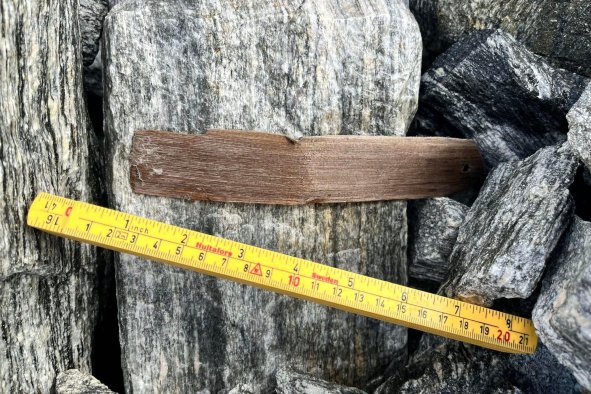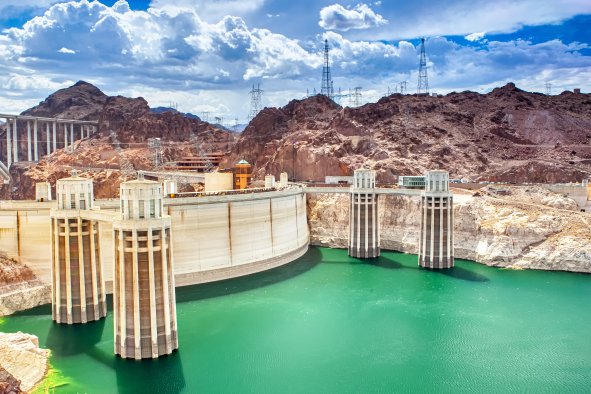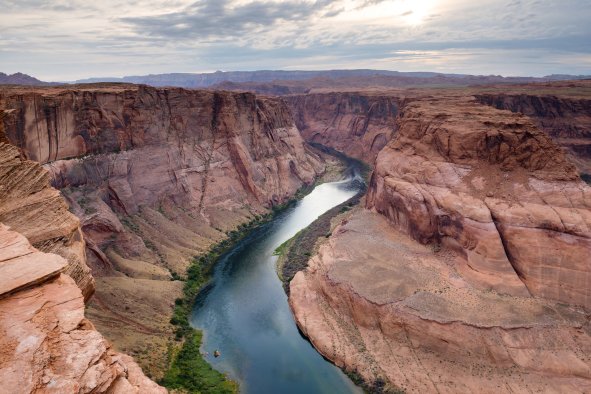The aurorae and the Perseids meteor shower have been caught on camera teaming up over Ohio for a spectacular night-time display.
The awe-inspiring video was captured by Cleveland photographer Matt Shiffler, who filmed the timelapse from the Marblehead Lighthouse on the shore of Lake Erie on Sunday.
"This was shot over the course of 30 minutes, you can see how quickly the aurora can ebb and flow based on how strong the data shows!" Shiffler wrote on X alongside the video. "At the peak of the Perseid Meteor Shower, the Northern Lights exploded across the sky into a memorizing collection of purple, pink, and green hues that reached most of the United States," he said in another post.
This astronomical double-whammy came courtesy of an exciting coincidence, with the Perseid meteor shower peaking and a powerful geomagnetic storm in our atmosphere occurring at the same time.
On Sunday night, a G3 "strong" geomagnetic storm occurred as a result of a huge plume of solar plasma—a coronal mass ejection or CME—slamming into our magnetic field. Geomagnetic storms are disturbances in our planet's magnetosphere as a result of the CME, causing charged particles from the CME to travel along our magnetic field lines and interact with gas molecules in the ionosphere. This excites the gas molecules, causing them to release their energy as light, creating the beautiful ripples of color we know as the aurorae.
"The strength of a solar storm is rated on a scale that is analogous to the hurricane scale," Roger Dube, a professor of physics at the Rochester Institute of Technology in New York, previously told Newsweek.
"The Earth's magnetic field causes charged particles to spiral around the polar regions as they move, increasing the likelihood of colliding with molecules in the atmosphere. These collisions include the emission of light of different colors, creating the colorful atmospheric showers that are called the northern lights."
More powerful geomagnetic storms can lead to the northern lights being seen further south than usual, with the G3 storms resulting in the aurora being visible as far south as Nevada and Northern California.
The G3 storm was followed by a G4 "severe" geomagnetic storm the very next day, which lit up the night sky across Australia and the U.K.
These storms just happened to coincide with the peak of the annual Perseids meteor shower, which hit its highest rate of meteors in the early hours of Monday morning. This meteor shower can result in between 50 and 100 meteors being visible per hour at its peak.
The Perseids are a result of the Earth passing through a trail of debris left by the comet Swift-Tuttle. As this comet approaches the inner solar system, as it does once every 133 years, it leaves a path of tiny pieces of rock and ice, which stay in place long after the comet has left. As the Earth passes through that area of space every year on its orbit, those tiny chunks enter our atmosphere at high speeds and burn up, creating the shooting bursts of light we see as meteors.
"If it just so happens that the Earth runs through one of these streams of dust and debris laid down by a comet, we get a meteor shower," Jonti Horner, an astrophysics professor at Australia's University of Southern Queensland, previously told Newsweek.
"The dust crashes into our atmosphere and ablates about 80 kilometers [50 miles] above the ground, visible from the ground as a meteor or shooting star," he said.
The shower will run between July 14 and September 1 this year, so while the peak has passed, stargazers may still catch a glimpse of this shower's meteors for a few more weeks.
As for more northern lights, another geomagnetic storm is due to hit the Earth tomorrow as a new CME heads our way, possibly between G1 and G2 in strength.
"The 14 Aug CME is likely to be directed towards Earth. Analysis of coronagraph imagery indicated a slow mover, with possible Earth arrival as early as later on 17 Aug and passage continuing into 18 Aug. Current forecast calls for the potential of G1 (Minor) storm levels later on 17 Aug (EDT-zone) with a slight chance for G2 (Moderate) levels on 18 Aug," NOAA's Space Weather Prediction Center said in a statement.
"However, this CME was difficult to analyze and there is a low level of forecast confidence regarding timing and intensity. As always, we won't know more about this CME until it arrives a million miles from Earth."
Do you have a tip on a science story that Newsweek should be covering? Do you have a question about the northern lights? Let us know via science@newsweek.com.
Disclaimer: The copyright of this article belongs to the original author. Reposting this article is solely for the purpose of information dissemination and does not constitute any investment advice. If there is any infringement, please contact us immediately. We will make corrections or deletions as necessary. Thank you.



